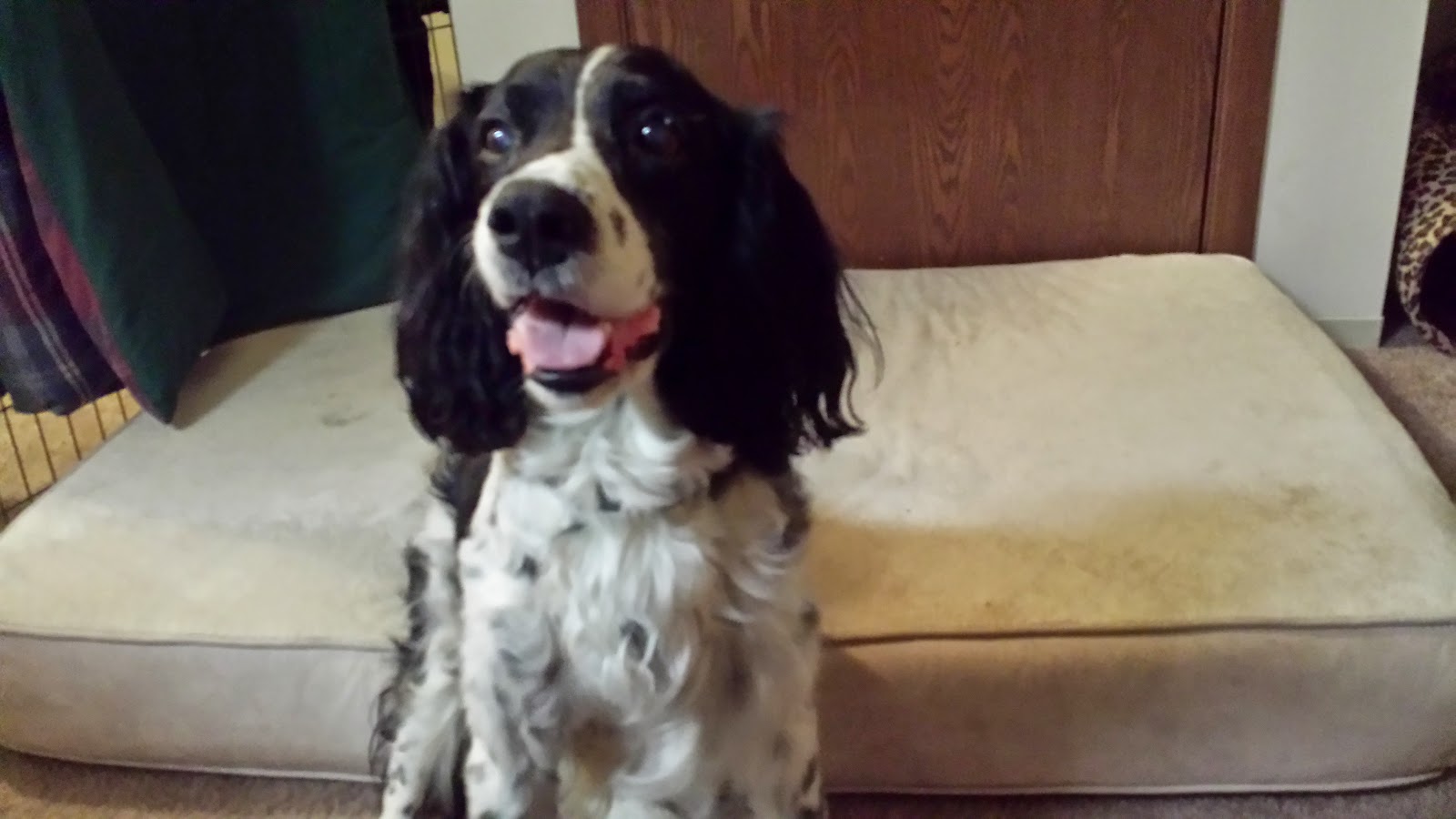ESRA's Go Diego Go
February 13, 2002-November 20, 2015
In October, Diego presented with a quickly progressing inability to eat with temporal and masticatory muscle spasm (the muscles over the top of his head and where his jaw hinges). We treated as Masticatory Muscle Myositis, as that seemed the most likely cause. He responded well for a couple weeks. Then he had a sudden worsening of symptoms where he had discharge from his left eye, nostril, and ear. He wouldn't eat even being hand fed, so I was force feeding him and syringing water into him. He hadn't really been soliciting attention lately, at least not in the same way he used to. Diego used to follow me everywhere and plop his head in my lap for petting, or rub happily on me if I didn't have any available hands. I can't remember the last time he did that.
 |
| Waiting at Blue Pearl, something we did a lot of. |
He was seen by a dental specialist for full mouth sedated xrays, hoping we'd find an abscessed PM4 (the big tooth on the top with 3 roots that can be responsible for the symptoms he was exhibiting). Unfortunately that wasn't the case. He was sent home with steroids and improved rapidly, for a short period of time. We unfortunately suspected a brain tumor that was steroid responsive.
Friday, November 13, I rushed him to the specialist again as he wouldn't eat, wouldn't drink, and could barely stand up. When he did, he circled, usually to the left. The neurologist evaluated him and agreed that we are likely facing a tumor with a very poor prognosis but we could try to improve his quality of life with a higher dose of steroids. She also suggested we try two antibiotics he hadn't been on yet, just in case it was an infection somewhere.
Diego made a dramatic improvement from Friday to Sunday. He was back to his happy, bouncy self! Eating, drinking, and wanting to interact with me.
Monday and Tuesday had ups and downs. We went for walks, I carefully managed his front legs, and we tried to just celebrate feeling good when he did.
Wednesday night I got home from work and gave everyone their meds. Diego ate his dinner first then I fed the others while I worked on his leg. He has been wearing a removable brace for the last week or so, in place of the bandage and splint he had been in. Every day, I would take the brace off and check his leg in the morning and the evening, looking for redness, letting it breathe, and then applying ant-friction powder before putting his brace back on. On Wednesday he laid on his side like I asked, he let me take his brace off without an issue. While I was examining his right leg he sat up quickly and bit my right hand. He didn't let go. He wasn't responsive to cues. I had to drop food on the ground to get him to let go. This was not Diego. I sat on the floor and cried. He seemed to return to normal rapidly, but it was brief. And then we had two more episodes that night where he had to be handled carefully and was unresponsive to cues. When I consulted with his specialists, they agreed, this was a progression of a tumor.
Diego was humanely euthanized in my home after we had tried everything that was in his best interest. He received the best medical care I could find. We managed his pain, he saw specialists, we made every decision as best we could for him. And when we could no longer help him, we said good bye for now. Diego was not euthanized because he bit me.
Rest easy good boy, good bye for now.
Thanks to English Springer Rescue America for doing everything possible for one of our own. Thank you to everyone who donated to his care, kindly lent an ear when I needed to talk, and those who cared about this little black and white Springer boy.






























.jpg)
.jpg)


.jpg)